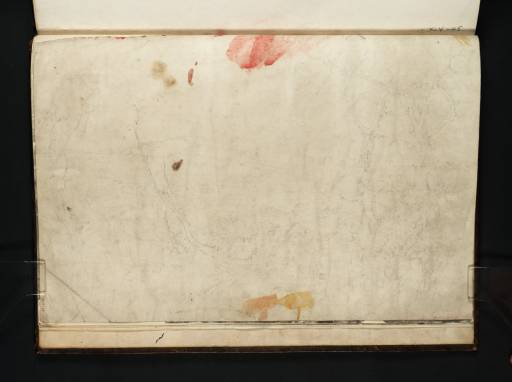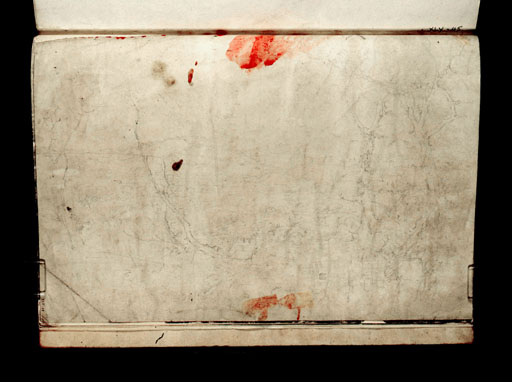Joseph Mallord William Turner Extensive Landscape with a Distant View of Caernarvon Castle 1799
Image 1 of 2
Joseph Mallord William Turner,
Extensive Landscape with a Distant View of Caernarvon Castle
1799
Joseph Mallord William Turner 1775–1851
Folio 47 Recto:
Extensive Landscape with a Distant View of Caernarvon Castle 1799
D01986
Turner Bequest XLV 46
Turner Bequest XLV 46
Pencil on white wove paper, 225 x 329 mm
Watermark ‘1794 | J Whatman’
Blind-stamped with Turner Bequest monogram below right of centre
Inscribed in pencil ‘46’ bottom left, descending vertically
Stamped in black ‘XLV-46’ bottom left, descending vertically
Watermark ‘1794 | J Whatman’
Blind-stamped with Turner Bequest monogram below right of centre
Inscribed in pencil ‘46’ bottom left, descending vertically
Stamped in black ‘XLV-46’ bottom left, descending vertically
Accepted by the nation as part of the Turner Bequest 1856
References
1909
A.J. Finberg, A Complete Inventory of the Drawings of the Turner Bequest, London 1909, vol.I, p.113, XLV 46, as ‘Distant view of Caernarvon Castle.’ c.1799.
1984
Andrew Wilton, Turner in Wales, exhibition catalogue, Mostyn Art Gallery, Llandudno 1984, p.69 under no.97.
As the soiled condition of the leaf would suggest, Turner must have used this drawing, made with the page turned horizontally, as his primary source for the large watercolour he exhibited at the Royal Academy in 1800, Caernarvon Castle, North Wales (Tate D04164; Turner Bequest LXX M).1 The elaborate foreground of that work, with its intricate river landscape incorporating woodland, bridges and buildings, is noted here, as is the castle itself with the island of Anglesey beyond. The group of trees that plays so important a role as repoussoir in the watercolour appears here as a screen across the immediate foreground, through which the panorama is glimpsed.
However, many features already appear to have been modified for the purposes of picturesque composition: the castle itself is perched on a high bank rather than low beside the Seiont estuary; and the hills beyond are considerably higher and more varied than they are in reality. The land to the west and north of Caernarvon is relatively flat. It may be, therefore, that this is not a study direct from nature from which the exhibited work was evolved, but rather an imaginative preparatory exercise in which elements of the ‘real’ view are already being manipulated with an eye to their place in a grand Academic machine. It is certainly the case that Caernarvon Castle, North Wales is one of the most ambitious of Turner’s early watercolours, and especially so if it is seen as part of a pair, illustrating ‘Peace’ and ‘War’; see the large study of the Destruction of the Bards by Edward I (Tate D04168; TB LXX Q). If so, it is a warning that even apparently straightforward instances of Turner’s gathering topographical material on tour may in fact be more stages in the process of creation.
Technical notes:
There are yellow, madder and ochre paint smears, and the sheet is very dirty and rubbed.
Andrew Wilton
May 2013
How to cite
Andrew Wilton, ‘Extensive Landscape with a Distant View of Caernarvon Castle 1799 by Joseph Mallord William Turner’, catalogue entry, May 2013, in David Blayney Brown (ed.), J.M.W. Turner: Sketchbooks, Drawings and Watercolours, Tate Research Publication, April 2016, https://www


